When you hear the word climate change, your mind immediately envisions a lonely polar bear swimming through a vast ocean looking for some lost ice on which to rest. If only it could be said that this was simply a dramatisation envisioned by climate change extremists in order to scare us into reducing our greenhouse emissions. If only…
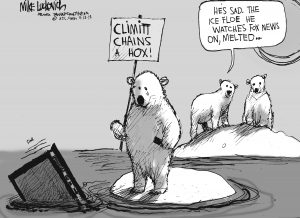
Since the 1970’s, Arctic sea ice has decreased at a rate of 13.3% per decade, translating to loss of 13,500 square miles of sea ice coverage annually (Comiso et al., 2008). This drastic loss in sea ice coverage is having severely negative impacts on arctic animals that rely upon it for survival.
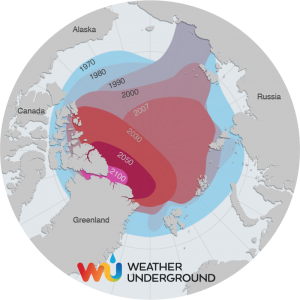
Polar Bears:
Sea ice loss can be regarded as the main driver responsible for the 22% decrease in polar populations since 1987 (Derocher, 2004). Not only is the sea ice that is so necessary for them to hunt on disappearing, but their penile bones are fracturing during their most intimate moments.
While the function of a penis bone is still unknown (Simmons and Firman, 2013), many animals have them and it seems that chemical pollutants called PCBs may be having detrimental effects on the genitalia of polar bears. It is suggested that PCBs cause (Sonne et al., 2006; Sonne et al., 2015):
- Smaller testes
- Smaller penis bones
- Lower calcium density in penis bones making them weaker
The loss of sea ice has accelerated the incidence of penile fracture as lowered foraging ability has led to skinnier bears, and therefore higher levels of circulating pollutants due to nutritional stress (Sonne et al., 2015).
Reduced reproductive success will have a severe impact on future populations.
“If it breaks, you probably won’t have a bear that can copulate” – Christian Sonne, 2015
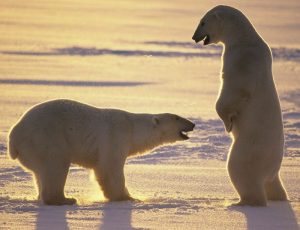
Walruses:
Walruses are being forced to utilise sea ice in areas of greater depth where there is no food, or move onto solid land (Greenpeace, 2012). Thousands of deaths in beaching populations have been reported due to overcrowding and panic stampedes into the water (Chadwick and Fischbaik, 2008), which are particularly dangerous to young pups. A number of abandoned calves have been observed swimming in water with depths of 3000m, as mothers are forced to deeper waters due to lack of food at overcroweded beaches (Cooper et al, 2006).

Ice Seals:
Ice seals require sea ice for birthing, pup rearing and resting. As ice is melting earlier in the year, pups are unable to complete their 6 week nursing period due to the premature collapse of shelters, exposing them to the elements and predators (Greenpeace, 2012). In 2002, 75% of Harp seal pups died due to lack of ice (Carillo-Rubio, 2011).
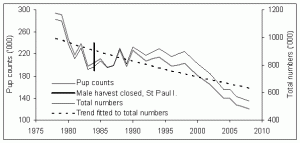
Bowhead Whales:
Ice-free waters will potentially impact permanent marine mammals. Bowhead whales calve under sea ice as it provides a safe environment from Killer whales, their primary predators (Moore and Laidre, 2006). The future lack of sea ice is likely to increase predation on whale calves, decreasing the reproductive success of the species and decreasing global population. Increased exposure to the sun may also be detrimental as these whales are heat intolerant, and don’t have an ability to combat this.
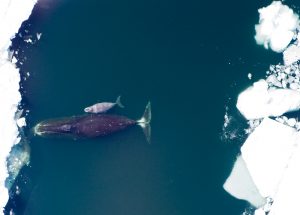
This brief overview of some of the largest and most prevalent Arctic organisms provides a good indication of the fragility of the community assemblage present in this ecosystem.
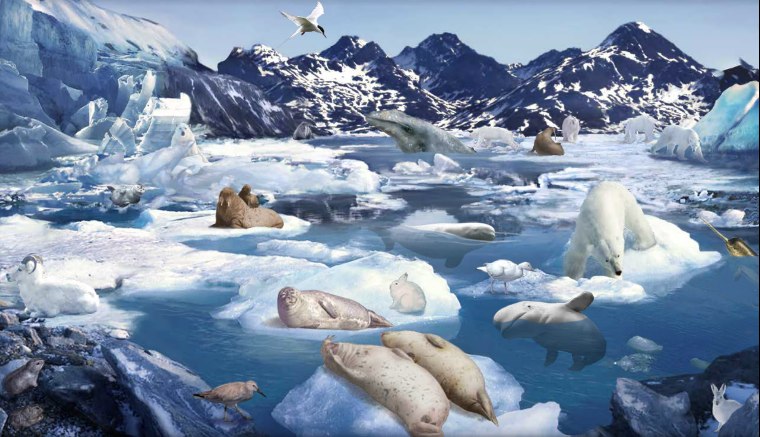
References:
Carillo-Rubio L (2011). Seals and their race against climate change. Climate Institute. www.climate.org/topics/ecosystems/seals-battle-climatechange.html [Accessed: 22/03/17]
Chadwick VJ & Fischbach AS (2008). US Geological Survey Factsheet 2008-3041. Pacific Walrus response to Arctic sea ice losses.
Cooper LW, Ashijian CJ, Smith SL, Codispoti LA, Grebmeier JM, Campbell RG & Sherr EB (2006). Rapid seasonal sea-ice retreat in the Arctic could be affecting Pacific walrus (Odobenus rosmarus divergens) recruitment. Aquatic Mammals, 32, 98–102.
Comiso J, Parkinson C, Gerston R, Stock L. (2008). Accelerated decline in the Arctic sea ice cover. Geophysical Research Letters. 35 (1), 41-49.
Derocher, A.E., Lunn, N.J., and Stirling, I. (2004). Polar bears in a warming climate. Integrative and Comparative Biology, 44, 163-176.
Greenpeace. (2012). Climate Change Impacts on Arctic Wildlife. Technical Report. (Review), 3-14.
Simmons L, Firman R. (2014). Experimental evidence for the evolution of the mammalian baculum by sexual selection. Evolution. 68 (1), 276-283.
Sonne C, Dyck M, Riget F, Jensen JE, Hyldstrup L, Letcher R . (2015). Penile density and globally used chemicals in Canadian and Greenland polar bears. Environment Research. 137 (1), 287-291.
Sonne C, Leifsson P, Dietz R, Born E. (2006). Xenoendocrine Pollutants May Reduce Size of Sexual Organs in East Greenland Polar Bears (Ursus maritimus). Environ. Sci. Technol., 40 (18), 5668–5674.
[Word Count: 500]
Recent Comments